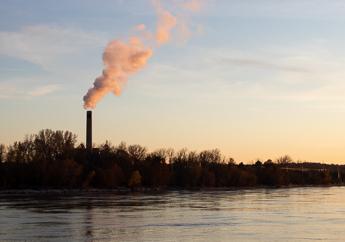Screening Model Action Levels (SMALs) are emission threshold levels, established by the Missouri Air Pollution Control Program. The main purpose of SMALs is to determine if a site-specific ambient impact analysis should be performed. If the potential emissions of a project exceed these levels, then a site-specific ambient impact analysis is required.
Proposed Screening Model Action Levels
1-Bromopropane
On Jan. 5, 2022, EPA amended the list of hazardous air pollutants under Clean Air Act section 112(b)(1) [Federal Register 87 FR 393], adding 1-bromopropane (Chemical Abstracts Service Number 106–94–5) in response to public petitions previously granted by EPA. The Missouri Department of Natural Resources issued a draft methodology to derive a SMAL to perform air quality analyses specific to 1-bromopropane. The proposed SMAL was available for public comment from Sept. 22, 2023 to Oct. 30, 2023. No public comments were received. The department finalized the new SMAL on Jan. 26, 2024.
2-Methylnaphthalene
The department evaluated the air dispersion modeling of 2-methylnaphthalene (Chemical Abstracts Service Number 91-57-6) required for air construction permits. In response to the evaluation’s findings, the department developed a draft proposal for a new SMAL to perform air quality analyses specific to 2-methylnaphthalene in future air construction permits. The proposed SMAL was available for public comment until May 31, 2023. No comments were received. The department finalized the new SMAL on Jan. 26, 2024.
Risk Assessment Levels (RALs) are human health-based limitations on HAP emissions from an air pollution source. RALs are concentrations of air toxics not expected to produce adverse human health effects during a defined period of exposure. RALs are considered in construction permitting projects that require HAP modeling.
RALs are managed by the department's Air Pollution Control Program, in coordination with the Missouri Department of Health and Senior Services' (DHSS) Bureau of Environmental Epidemiology. A table containing HAPs and their current RALs is available below.
New or Revised Risk Assessment Levels
The Air Pollution Control Program may propose a new or revised RAL to ensure consistency with EPA’s guidelines and recent toxicological literature. Proposed RALs are reviewed by DHSS, which will either agree or propose an alternative RAL.
The Air Pollution Control Program will invite the public to review and submit written comments on any proposed new or revised RAL during a 30-day public comment period. The public comment period may be extended by 30 calendar days if a written request is received within 25 calendar days of the original notice of the comment period. Any changes made to a proposed RAL as a result of public comments will go through another public comment period. Final decisions and response to comments will be made available below. New or revised RALs become effective on the date they are published on on this webpage.
1-Bromopropane
On Jan. 5, 2022, EPA amended the list of HAPs under Clean Air Act section 112(b)(1) [Federal Register 87 FR 393], adding 1-bromopropane (Chemical Abstracts Service Number 106–94–5) in response to public petitions previously granted by EPA. As a result, the Missouri Department of Natural Resources developed a draft proposal for new 24-hour and annual RALs to perform air quality analyses specific to 1-bromopropane in future air construction permits.
The proposed RALs were available for public comment from May 1, 2023 to May 31, 2023. No public comments were received. The department finalized the new RALs on Jan. 26, 2024.
Lead and Lead Compounds
On Sept. 29, 2023, the Missouri Department of Natural Resources recommended replacing the existing 8-hour average, 24-hour average and annual average RALs for lead and lead compounds (Chemical Abstracts Service Number 7439–92–1). DHSS agreed with the department’s recommendation on Oct. 26, 2023.
The proposed RALs were available for public comment from Nov. 27, 2023 to Dec. 27, 2023. No public comments were received. The department finalized the new 8-hour average, 24-hour average and annual average RALs of 2 micrograms per cubic meter (µg/m3), 0.357 µg/m3 and 0.07 µg/m3 on Jan. 26, 2024. The 3-month rolling average is 0.15 µg/m3.
Cobalt and Cobalt Compounds
On Nov. 5, 2024, the Missouri Department of Natural Resources recommended replacing the existing 8-hour average RALs for cobalt and cobalt compounds (Chemical Abstracts Service Number 7440-48-8). DHSS agreed with the department’s recommendation on Dec. 3, 2024.
The proposed RALs were available for public comment from Dec. 11, 2024 to Jan. 24, 2025. The public comment period was originally scheduled to end on January. 10, 2025; however, the department extended the comment deadline in response to an extension request. The department received additional stakeholder questions and another extension request. The department posted a supplemented proposal for public comment from March 5, 2025 to April 3, 2025. Public comments and the department's responses are available below.
The department finalized the replacement of the existing 8-hour average with a 24-hour RAL of 0.1 micrograms per cubic meter (µg/m3) and an annual RAL of 0.00013 µg/m3 on Nov. 14, 2025. The annual RAL is based on an individual lifetime cancer risk of one-in-one million. Annual average cobalt concentrations modeled under 10 CSR 10-6.060 that are at or below 0.0013 µg/m3, a concentration corresponding to a cancer risk of one-in-one hundred thousand, will have met the annual standard.

